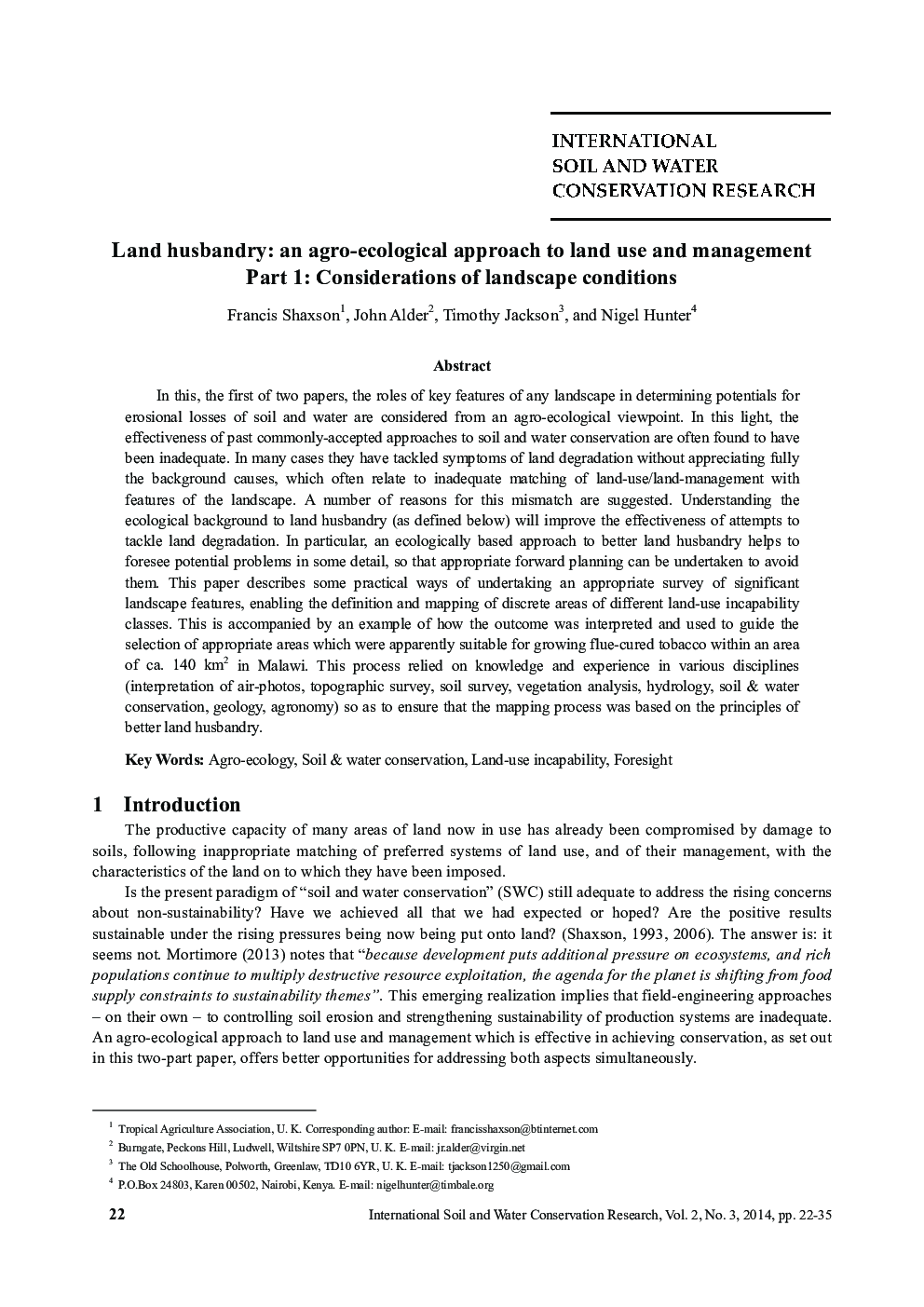| Article ID | Journal | Published Year | Pages | File Type |
|---|---|---|---|---|
| 4452119 | International Soil and Water Conservation Research | 2014 | 14 Pages |
In this, the first of two papers, the roles of key features of any landscape in determining potentials for erosional losses of soil and water are considered from an agro-ecological viewpoint. In this light, the effectiveness of past commonly-accepted approaches to soil and water conservation are often found to have been inadequate. In many cases they have tackled symptoms of land degradation without appreciating fully the background causes, which often relate to inadequate matching of land-use/land-management with features of the landscape. A number of reasons for this mismatch are suggested. Understanding the ecological background to land husbandry (as defined below) will improve the effectiveness of attempts to tackle land degradation. In particular, an ecologically based approach to better land husbandry helps to foresee potential problems in some detail, so that appropriate forward planning can be undertaken to avoid them. This paper describes some practical ways of undertaking an appropriate survey of significant landscape features, enabling the definition and mapping of discrete areas of different land-use incapability classes. This is accompanied by an example of how the outcome was interpreted and used to guide the selection of appropriate areas which were apparently suitable for growing flue-cured tobacco within an area of ca. 140 km2 in Malawi. This process relied on knowledge and experience in various disciplines (interpretation of air-photos, topographic survey, soil survey, vegetation analysis, hydrology, soil & water conservation, geology, agronomy) so as to ensure that the mapping process was based on the principles of better land husbandry.
